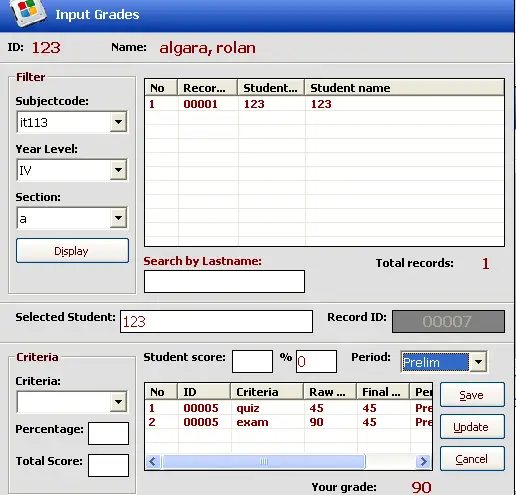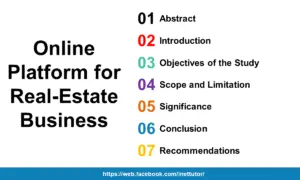ELearning System for Computer System Servicing Chapter 1
Chapter I
INTRODUCTION
In the past few years, numerous enthusiasts have predicted revolution education through the adoption of ELearning Platforms. The promise of educational benefits, anticipated since early days of computer use, has accelerated with the increased availability of computers and the Internet in schools. The wide spread proliferation of computers in school is based on the assumption that computers has significant role to play in education and that their use can and will result in the advancement of education.
Student is expected to learn through computers use; test score can rise, and student would learn at a faster rate. Moreover, Computer Based Learning in Education could assist students in their preparation to enter and compete in a modern global work force.
ELearning Platforms are using computer software to enhance teaching experience. An instructor employs this method when explaining concepts through use of diagrams, graphs and other visual features with an aim of making the learner understand the topic.
ELearning System for Computer System Servicing: Learning and Assessment Tool for high School Students which is designed and developed to provide student with the required information on how to assemble the parts of personal computers. It is designed for the student to learn and to enhance their knowledge, ability and skills by means of computer hardware.
Computer-Assisted Instruction (CAI) represents a teaching tool that involves the use of a computer program or programs to facilitate the education of a group of students. Its major goal is to provide practical instruction through interactive programs that teach effectively. The method was first introduced in the 1960s. Since then it has evolved so that in the twenty-first century computers are an integral part of the education process in the developed countries.
Computer-Assisted Instruction (CAI) is being used to teach a variety of skills and subjects within the school setting.
Project Context
The implementation of ELearning System for Computer System Servicing provides tutorials on how to assemble, to troubleshoot and to diagnose computer hardware and software and other parts. At the end of every tutorial, there will be a given exam to measure the students learning about the topic in order to test their ability on the tutorials provided.
There is no doubt that technology has become incorporated into our school systems. Computers are used not only as a means of helping schools analyze data, computers have become a pervasive tool toward optimizing student learning. For example, students are regularly using the Internet to gather and assimilate information for use in research assignments. They are preparing “electronic” presentations using computer presentation programs and LCD projectors. They are using word processing programs to create various other reports. Students are even using spreadsheets to increase their experiences with mathematical concepts. In addition, many schools have incorporated interactive computer-assisted-instruction into their program to provide students opportunities to master specific educational objectives or standards
There is no doubt that technology has become incorporated into our school systems. Computers are used not only as a means of helping schools analyze data, computers have become a pervasive tool toward optimizing student learning. For example, students are regularly using the Internet to gather and assimilate information for use in research assignments. They are preparing “electronic” presentations using computer presentation programs and LCD projectors. They are using word processing programs to create various other reports. Students are even using spreadsheets to increase their experiences with mathematical concepts. In addition, many schools have incorporated interactive computer-assisted-instruction into their program to provide students opportunities to master specific educational objectives or standards.
As the use of CAI varies depending on the target group and subject, CAI programs never follow a single theoretical model of instruction. In many of them the instruction is organized as interaction between a student and a teacher. Other programs seek to create an engaging and motivating environment in a drive to encourage the learning process.
CAI programs are developed to offer a specific kind of student interaction with the computer screen. For CAI developers the computer screen represents a programmable interactive communications medium. As these programs seek to address the needs of a particular group of students, their developers aim to create a program that would teach effectively and feature all the available experience and expertise. Each CAI program is tailored for a specific domain, topic and group of students.
Moreover, progress report will also be provided by the system to ensure that the entire lesson has been thoroughly understood by the students. This system identifies and describes various components of computer hardware.
If the Interactive Computer Assisted Instruction for Computer Hardware servicing will be implemented, it will help the teachers to lessen their effort in teaching the students regarding the topic.
Purpose and Description
The main purpose of the study is to develop an ELearning System for Computer System Servicing as an aide in teaching Computer System Servicing as an exploratory course for High School students and not treated as a replacement for teachers.
CAI programs are developed to offer a specific kind of student interaction with the computer screen. For CAI developers the computer screen represents a programmable interactive communications medium. As these programs seek to address the needs of a particular group of students, their developers aim to create a program that would teach effectively and feature all the available experience and expertise. Each CAI program is tailored for a specific domain, topic and group of students.
The system provides Interactive lesson such as videos and presentations that tells about the computer Hardware Servicing program which provides knowledge and skills in diagnosing and troubleshooting programs of personal computer systems, networks, software and its parts. The programs trains the student fixing computers, replacing defective parts having the computer system back to normal operation as well as maintaining computer system networks in interactive manner by giving assessment after the lesson.
The potential benefits of this tool, the Computer Assisted Instruction (CAI) cannot be underestimated in the contemporary world. It is obvious that the current trend in search all over the world is the use of computer facilities and resource to enhance students learning. It is also further showed that the interactive approaches to lecturing significantly enhance learning with the use of technology. With this, the system also contains report modules which show the students’ performance from the start of the assessment.
General Objectives
The study aims to develop a system which entitled “ELearning System for Computer System Servicing” to help high school students learn through the use of Interactive Computer application of the exploratory course for K to 12 program of Department of Education (Computer System Servicing).
Specifically, it aims to:
- Determine the preference of the students about proposed ELearning System for Computer System Servicing exploratory course.
- Provides automated assessment and monitoring of students’ academic performance.
- Improve the learning of the students by providing different teaching materials such as videos, text, and other means of learning.
- Shows detailed reports on students’ assessment such as quizzes.
Credit to the authors of the project
Our team can modify the project based on your specific business requirements.
You may visit our facebook page for more information, inquiries and comments.
Hire our team to do the project.


